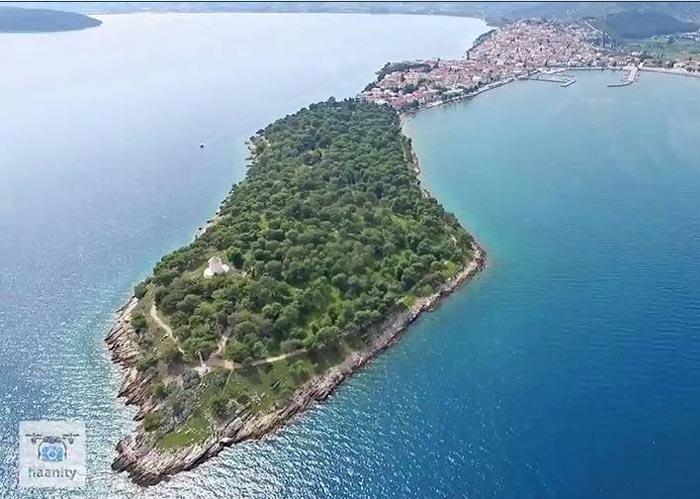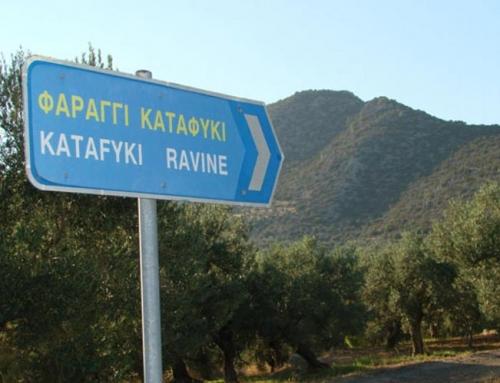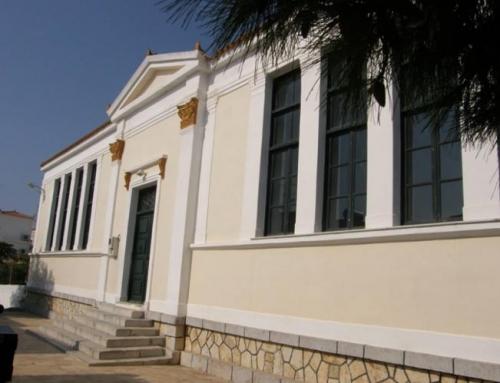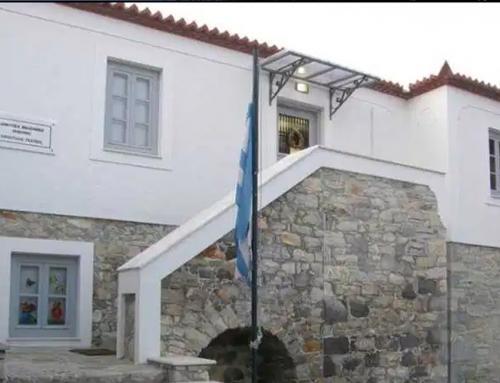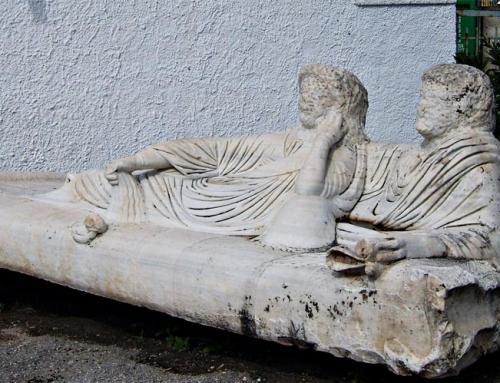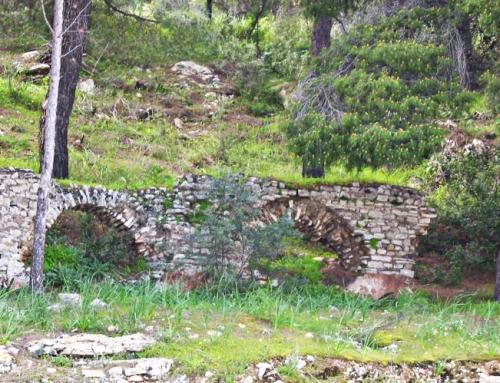At the eastern end of the city, there is the Bisti peninsula (in Arvanitika Bist means Tale) While Ermioni of Mycenaean and Geometric times developed in the area of the hill of Magoula, the new city of the Ermioneans, from Archaic times (7th-6th century) probably developed first in Bisti next to the famous Porphyryeum.
From the temple of Poseidon built here this edge is called “Poseidon”. It is an important open-air archaeological site with an aura of history and culture. In the classical and Roman period the city of Ermioni, which now extends between the two ports, was surrounded by a strong wall, many parts of which are preserved peripherally on the peninsula and within the settlement of Ermioni. According to Pausanias, the area was studded with temples. During the Byzantine and Venetian periods, the classical walls were repaired and reinforced, while on the western side another wall was built, from one sea to the other, using building materials from ancient buildings. Thus Bisti is transformed into a stronghold castle and from this Ermioni gets the name ‘Kastri’. This castle with its towers resisted heroically against the Turks and was sacked by the Turks in 1537. During the Ottoman Rule the castle was abandoned and in 1729 Abbot Michael Fourmont demolished the western wall, 9 m high, in order to locate ancient inscriptions which, he copied and destroyed many of them.
At the end of the 18th century George Mitsas built a windmill on its eastern side. In 1908, the archaeologist Alex Philadelfeas carried out excavations in many places. At the beginning of the 20th century Bisti was planted with trees. Today in this pine grove, the visitor can find ancient findings of columns of the ancient temple of Poseidon or, according to others, of Athena at the entrance next to the chapel of St. Nicholas. Archaic temple, (late 6th century BC), Doric temple hexastyle with 12 columns on the side,. Only the “stereobate of the floor is preserved. On its eastern side, the arch of the Byzantine basilica built on its place can be seen. Moving north, we find the windmill of the Mitsaion fighters of 1821, which was built between 1780 and 1790 and was a two –level mill with 22 steps. It is surrounded by battlements. In the mud that connects the stones, broken shells of porphyry stones from the ancient piles (6 positions) have been used instead of gravel, making the mill unique in the world because of this peculiarity in its construction. Today it has been restored under the care of the Municipality of Ermioni. The windmill was also the site of the workshops for the processing of the famous Ermionian purpura The famous ancient processing workshop of the purpura (Porfireio) of the city of Ermioni. Broken shells were used instead of gravel as a binder in the construction of the mill and the perimeter wall in the 5th century BC. Remains of these are still found today scattered along the peripheral road. The mill was in operation for over 1 000 years and processed millions of purpuras. The Ermionian purpura found by Alexander the Great at Susa was considered a most valuable loot. In all historical periods, the site of the Bisti was surrounded by walls. On the south side by the “cyclopean walls” and on the north side by the medieval walls, with which the city was fortified, traces of which exist to this day.
At the edge of the peninsula the old lighthouse dominates that still guides ships to the port of Ermioni, built on the base of a very strong ancient circular tower. From this tower it was possible to supervise the entire sea area and the ancient city of Ermioni. Next to the lighthouse there is an ancient tomb and to the right of it, in the middle of the cliff, is the Cave of Vitoriza. As the local legend says, a monster lived there who was the fear and terror of children, because whoever he caught after tortures he petrified him. But also the monster was the fear of fishermen who were afraid that he might take notice of them and put his shrill voice and stir up the sea and take them to the watery grave, like so many others who had despised his power. Scattered around the site are thirteen cisterns from antiquity, but most of them are concreted or destroyed. There they stored rainwater to water their animals. Their characteristic feature was the circular spout. They were spherical inside and were carved in rocks and had a capacity of no more than ten cubic metres. In all seasons of the year, Bisti is an ideal place for walks, study and tranquility. In the summer, it offers enjoyable swimming in its crystal clear waters. At the two entrances of the grove, with the care of the Municipal Community, the diligence of the ILME, the financial support of the Municipal Enterprise for Sports and Environment of the Municipality of Ermionida and the voluntary contribution of the Nature Group of Ermionida, information boards have been placed in which the forest is represented and its history is written. The archaeological findings and the route that the visitor can follow to admire them are also displayed.
A magical forest full of legends and traditions.
